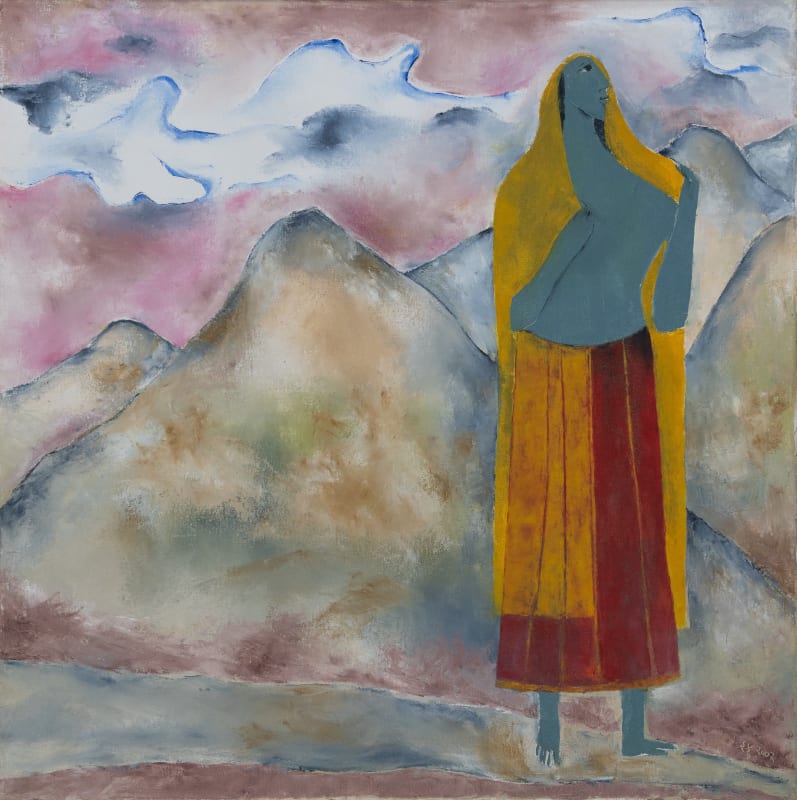For Haku Shah, the ghat (earthen vessel) is a profound symbol of strength, nourishment, and continuity—an embodiment of Earth itself. The exhibition “Ya Ghat Bheetar / Rediscovering Form”, examines Shah the painter, archivist and ethnographer - balancing the aesthetics between form and function.
In his paintings, the feminine form carries an intuitive function - embodying a holistic renewal. He correlates the form of a woman to that of an earthen pot, as a conjoined form-space that births cycles of both creation and preservation. Enforcing an eco-consciousness through the paintings, he brings forth forms of femininity that entwine the three – mati (clay), ghat (earthen vessel), and shakti (feminine energy).
In his paintings, Haku Shah displays a fluidity of mediums, layering painting with literature - composing the impressions of the everyday women with poetic verses by Kabir and Sufi poets. The title of this exhibition draws from Kabir’s nirgun poem Ya Ghat Bheetar where the body, like an empty vessel, holds infinite possibilities waiting to be discovered.
Just as the potter coaxes shapes from raw earth, so does creation emerge from the elemental. These parallel processes converge to celebrate the balance between form and function through the image of a woman. Just as the potter kneads a broad base, Shah assembles his visual vocabulary on the sonic horizons of music and poetry, allowing the nirgun (formless/abstract) essence to break away from the rigid conventions of modernism. Broadening the verticality with an empathetic inclusivity of earth culture, sets him apart from his contemporaries as he moulds a form that aligns with function. A selection from Shah’s extensive archive of photographs documenting potters and the resulting terracotta pieces, further highlights this synthesis of modernity with ecocultural aesthetics, that is not limited to the formal elements of his visual practice but also permeated the way he lived his life.
